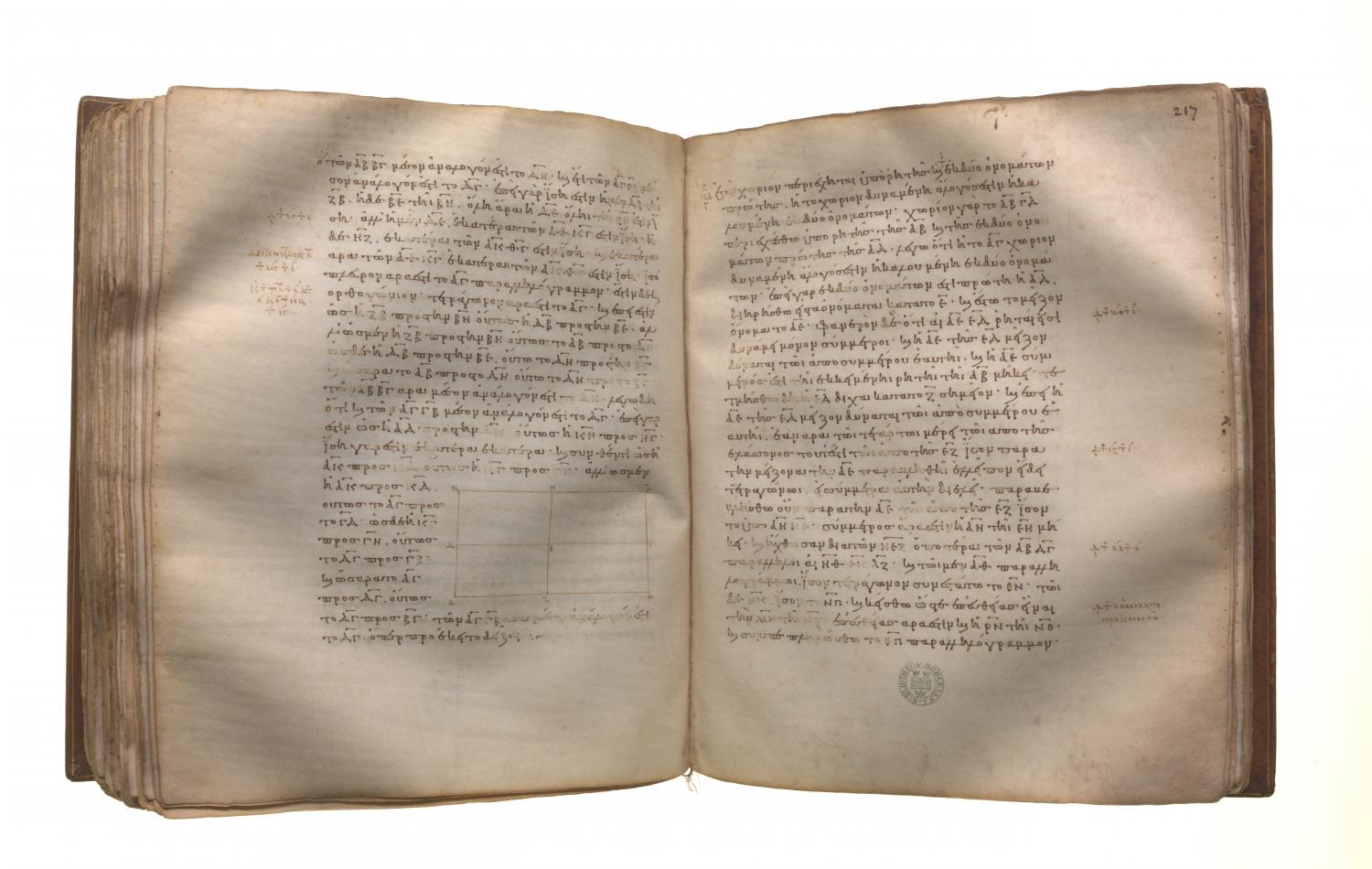Classification of incommensurables: Book 10 Proposition 54
Translations
If an area be contained by a rational straight line and the first binomial, the side of the area is the irrational straight line which is called binomial. For let the area AC be contained by the rational straight line AB and the first binomial AD; I say that the side of the area AC is the irrational straight line which is called binomial. For, since AD is a first binomial straight line, let it be divided into its terms at E, and let AE be the greater term. It is then manifest that AE, ED are rational straight lines commensurable in square only, the square on AE is greater than the square on ED by the square on a straight line commensurable with AE, and AE is commensurable in length with the rational straight line AB set out. [X. Deff. II. 1] Let ED be bisected at the point F. Then, since the square on AE is greater than the square on ED by the square on a straight line commensurable with AE, therefore, if there be applied to the greater AE a parallelogram equal to the fourth part of the square on the less, that is, to the square on EF, and deficient by a square figure, it divides it into commensurable parts. [X. 17] Let then the rectangle AG, GE equal to the square on EF be applied to AE; therefore AG is commensurable in length with EG. Let GH, EK, FL be drawn from G, E, F parallel to either of the straight lines AB, CD; let the square SN be constructed equal to the parallelogram AH, and the square NQ equal to GK, [II. 14] and let them be placed so that MN is in a straight line with NO; therefore RN is also in a straight line with NP. And let the parallelogram SQ be completed; therefore SQ is a square.[Lemma] Now, since the rectangle AG, GE is equal to the square on EF, therefore, as AG is to EF, so is FE to EG; [VI. 17] therefore also, as AH is to EL, so is EL to KG; [VI. 1] therefore EL is a mean proportional between AH, GK. But AH is equal to SN, and GK to NQ; therefore EL is a mean proportional between SN, NQ. But MR is also a mean proportional between the same SN, NQ;[Lemma] therefore EL is equal to MR, so that it is also equal to PO. But AH, GK are also equal to SN, NQ; therefore the whole AC is equal to the whole SQ, that is, to the square on MO; therefore MO is the side of AC. I say next that MO is binomial. For, since AG is commensurable with GE, therefore AE is also commensurable with each of the straight lines AG, GE. [X. 15] But AE is also, by hypothesis, commensurable with AB; therefore AG, GE are also commensurable with AB. [X. 12] And AB is rational; therefore each of the straight lines AG, GE is also rational; therefore each of the rectangles AH, GK is rational, [X. 19] and AH is commensurable with GK. But AH is equal to SN, and GK to NQ; therefore SN, NQ, that is, the squares on MN, NO, are rational and commensurable. And, since AE is incommensurable in length with ED, while AE is commensurable with AG, and DE is commensurable with EF, therefore AG is also incommensurable with EF, [X. 13] so that AH is also incommensurable with EL. [VI. 1, X. 11] But AH is equal to SN, and EL to MR; therefore SN is also incommensurable with MR. But, as SN is to MR, so is PN to NR; [VI. 1] therefore PN is incommensurable with NR. [X. 11] But PN is equal to MN, and NR to NO; therefore MN is incommensurable with NO. And the square on MN is commensurable with the square on NO, and each is rational; therefore MN, NO are rational straight lines commensurable in square only.
